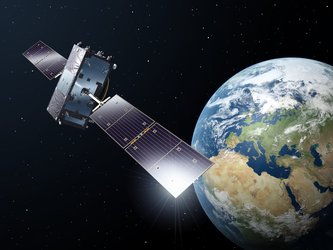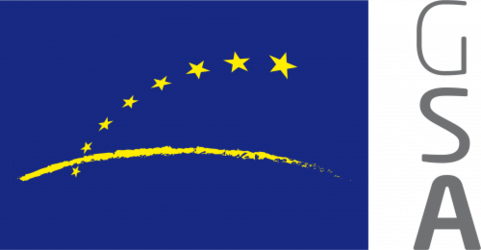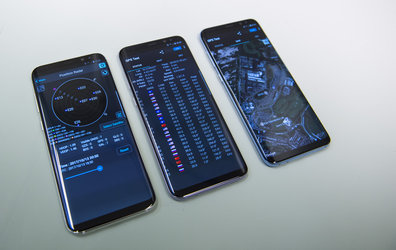Next four Galileo satellites fuelled for launch
Europe’s next four Galileo satellites have been fuelled at Europe’s Spaceport in Kourou, French Guiana, in preparation for their launch on 25 July.
The four satellites were placed into their protective containers to be transported from the S1A processing building to the S3B payload preparation building, where they were filled with the hydrazine fuel that will keep the satellites manoeuverable during their 12-year working lives.
The next step is to fit the quartet onto the dispenser that holds them in place securely during launch and then releases them into space once the upper stage of the Ariane 5 rocket reaches its 22 922 km-altitude target orbit.

After that, the satellites plus dispenser will be fitted onto the upper stage then enclosed by the two sides of the protective launch fairing – one of which has had the mission logo added to it.
Meanwhile the Ariane 5 for this launch – known as Flight VA244 – has undergone assembly inside the Spaceport’s Launcher Integration Building.

The Galileo System began Initial Services on 15 December 2016, and more than 100 million devices are using Galileo today.
About Galileo
Galileo is Europe’s own global satellite navigation system, consisting of both the satellites in space and their associated ground infrastructure.

The definition, development and in-orbit validation phases were carried out by ESA, and co-funded by ESA and the European Commission. This phase created a mini-constellation of four satellites and a reduced ground segment to validate the overall concept, ahead of further deployment.
Success led to the current Full Operational Capability phase, fully funded by the EU and managed by the European Commission. The European Commission and ESA have a delegation agreement by which ESA acts as system design authority and procurement agent on behalf of the European Commission.















 Germany
Germany
 Austria
Austria
 Belgium
Belgium
 Denmark
Denmark
 Spain
Spain
 Estonia
Estonia
 Finland
Finland
 France
France
 Greece
Greece
 Hungary
Hungary
 Ireland
Ireland
 Italy
Italy
 Luxembourg
Luxembourg
 Norway
Norway
 The Netherlands
The Netherlands
 Poland
Poland
 Portugal
Portugal
 Czechia
Czechia
 Romania
Romania
 United Kingdom
United Kingdom
 Slovenia
Slovenia
 Sweden
Sweden
 Switzerland
Switzerland
































